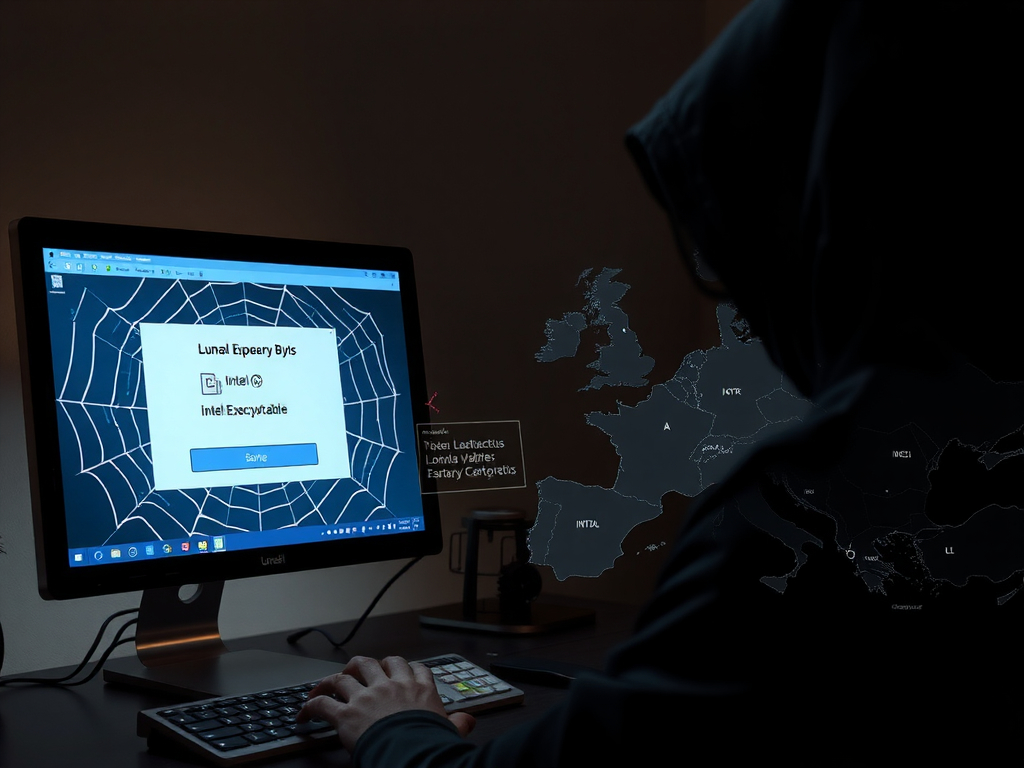Threat Overview
A comprehensive threat report published by AlienVault on October 20, 2025, reveals a significant expansion in the tactics of Lunar Spider, a notorious Russian cybercriminal group. This report, titled ‘Lunar Spider Expands their Web via FakeCaptcha,’ details how the group has enhanced its initial access methods by exploiting vulnerable websites with CORS vulnerabilities, predominantly in Europe.
Group Overview
The Lunar Spider group is known for its sophisticated and persistent cybercriminal activities. Their latest scheme involves injecting compromised websites with a FakeCaptcha framework that not only deceives users but also includes advanced victim monitoring capabilities.
Attack Pattern
The infection chain initiated by Lunar Spider is intricate and multi-layered. It begins with the injection of a malicious MSI downloader into vulnerable sites. This downloader contains a legitimate Intel executable, which serves as a decoy, and a malicious DLL named Latrodectus.
The MSI downloader registers the Intel EXE in the Run registry key, ensuring it executes on system startup. It then uses DLL search order hijacking to sideload the Latrodectus DLL. Once loaded, Latrodectus V2 establishes communication with its command-and-control (C&C) server and proceeds to execute further enumeration commands, allowing the attackers to gather more information about the compromised system.
Detailed Analysis
The report provides an in-depth analysis of each component involved in this attack:
- FakeCaptcha Framework: This framework is used to inject malicious scripts into vulnerable websites. It tricks users into interacting with it, thereby initiating the infection process.
- MSI Loader: The MSI downloader is designed to evade detection by security software. It uses legitimate executables to mask its true intent and sideloads the malicious DLL through DLL search order hijacking.
- Latrodectus Configuration: The Latrodectus DLL is configured to communicate with a remote C&C server, allowing attackers to control the compromised system remotely. It also includes capabilities for further enumeration and data exfiltration.
The report also outlines detection opportunities and indicators of compromise (IoCs) that security analysts can use to identify and mitigate this threat.
Recommendations
To protect against such sophisticated attacks, organizations should consider the following recommendations:
- Regularly update and patch all software, especially web applications, to eliminate known vulnerabilities.
- Implement robust security monitoring tools that can detect anomalous activities and unusual communication patterns.
- Conduct regular security audits and penetration testing to identify and fix potential entry points for attackers.
- Train employees on recognizing phishing attempts and other social engineering tactics commonly used in these attacks.
- Use multi-factor authentication (MFA) to add an extra layer of security to critical systems and accounts.
The report concludes with a list of IoCs and mitigation strategies that can help organizations defend against the Lunar Spider group’s latest attack methods. By staying informed and proactive, security analysts can better protect their networks from these evolving threats.


